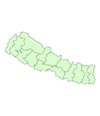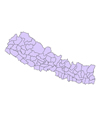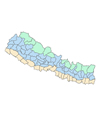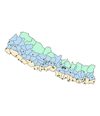Geographic Information System (GIS) and Public Policy Research:
Development, Democracy, Conflict, and the Environment
GIS and Public Policy Team:
Alok K. Bohara, Professor, University of New Mexico
Keshav Bhattarai, Professor, Central Missouri State University
Grant Harris, US Fish and Wildlife
Sarah Masek, University of New Mexico
Steve J. Archambault, University of New Mexico
Naresh Nepal, University of New Mexico
Robert Fonner, University of New Mexico
Hari Katuwal, University of New Mexico
Geographic Information System has become a valuable tool to map digital data. In addition to creating visual display of fine images, the GIS tool can be used to link various types of socio-economic data with the topographical and environmental information. Disease mapping, food security, habitat range analysis, poverty mapping, migratory movements, industrial locational analysis, landuse patterns, environmental degradation, and network analysis are just some examples. Nepal Study Center is developing GIS capability to link, correlate, and assess various behavioral relations. The goal of this program is to assist develop better public policies, including in areas of economic and political devolution and conflict resolution. Our heavy focus is in spatial analysis, modeling, and drawing policy implications.
Some GIS-related ongoing projects: food security and natural capital; habitat modeling; Bayesian disease mapping
Development Regions

Zones

Districts

Villages

Ecological Belts

Urban Centers

|
